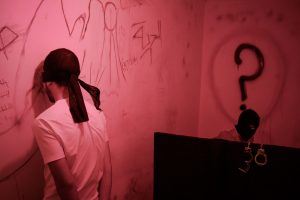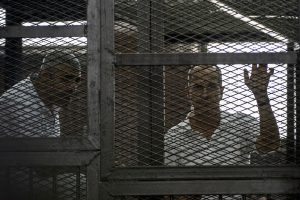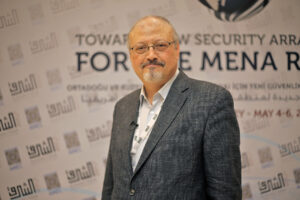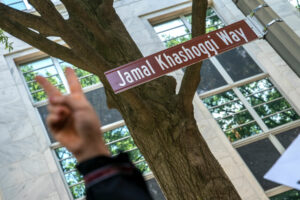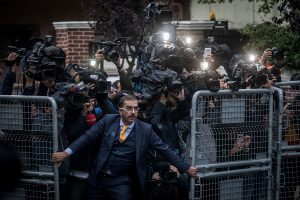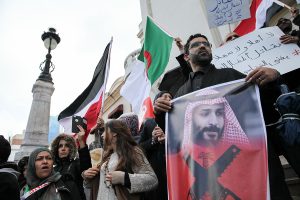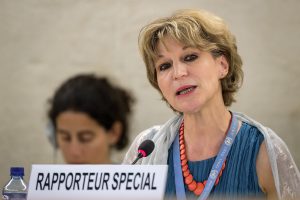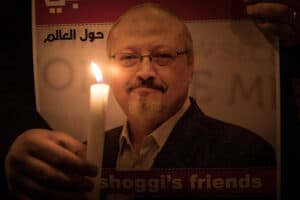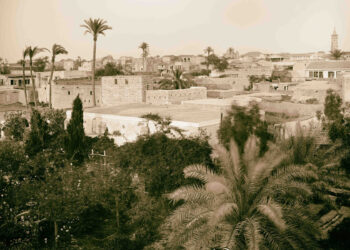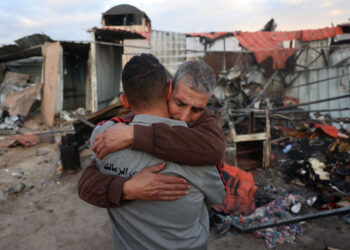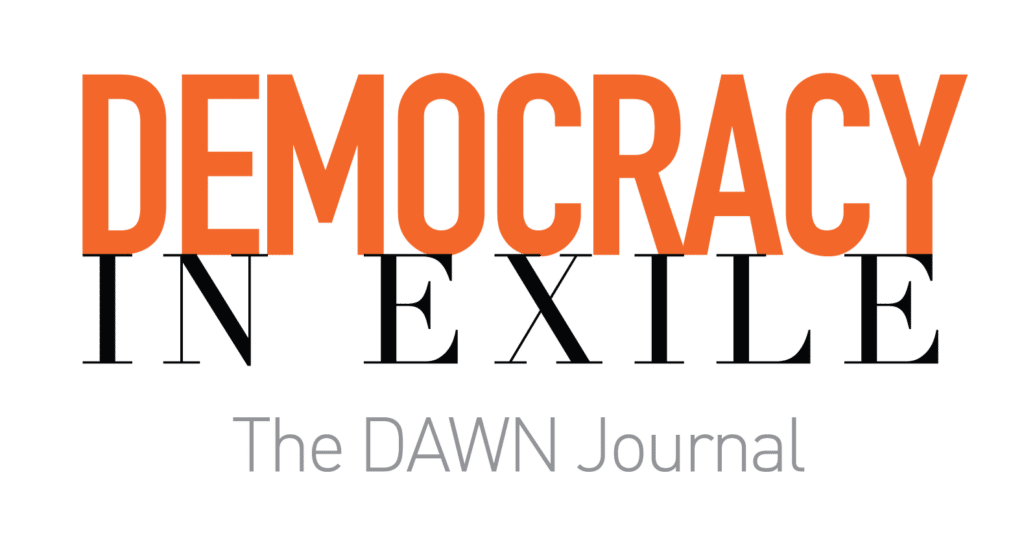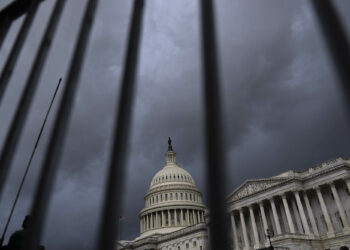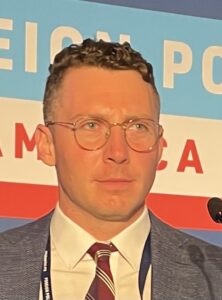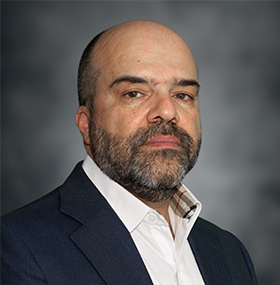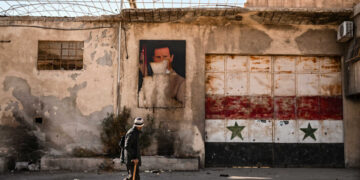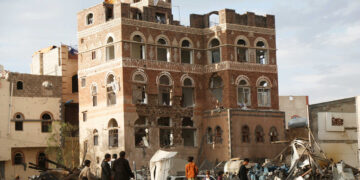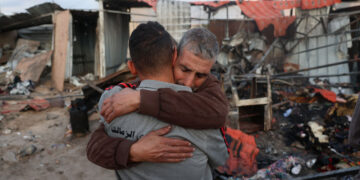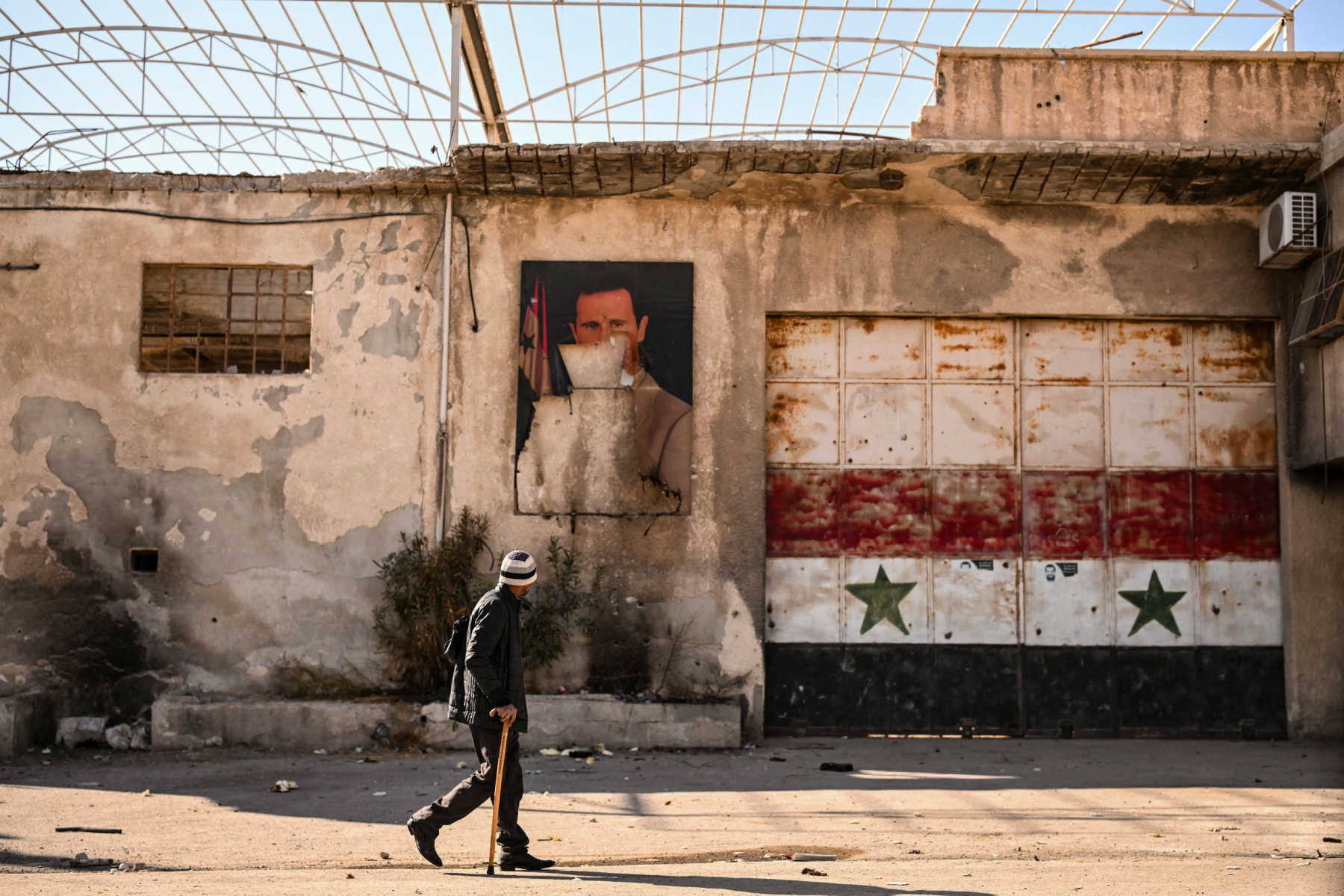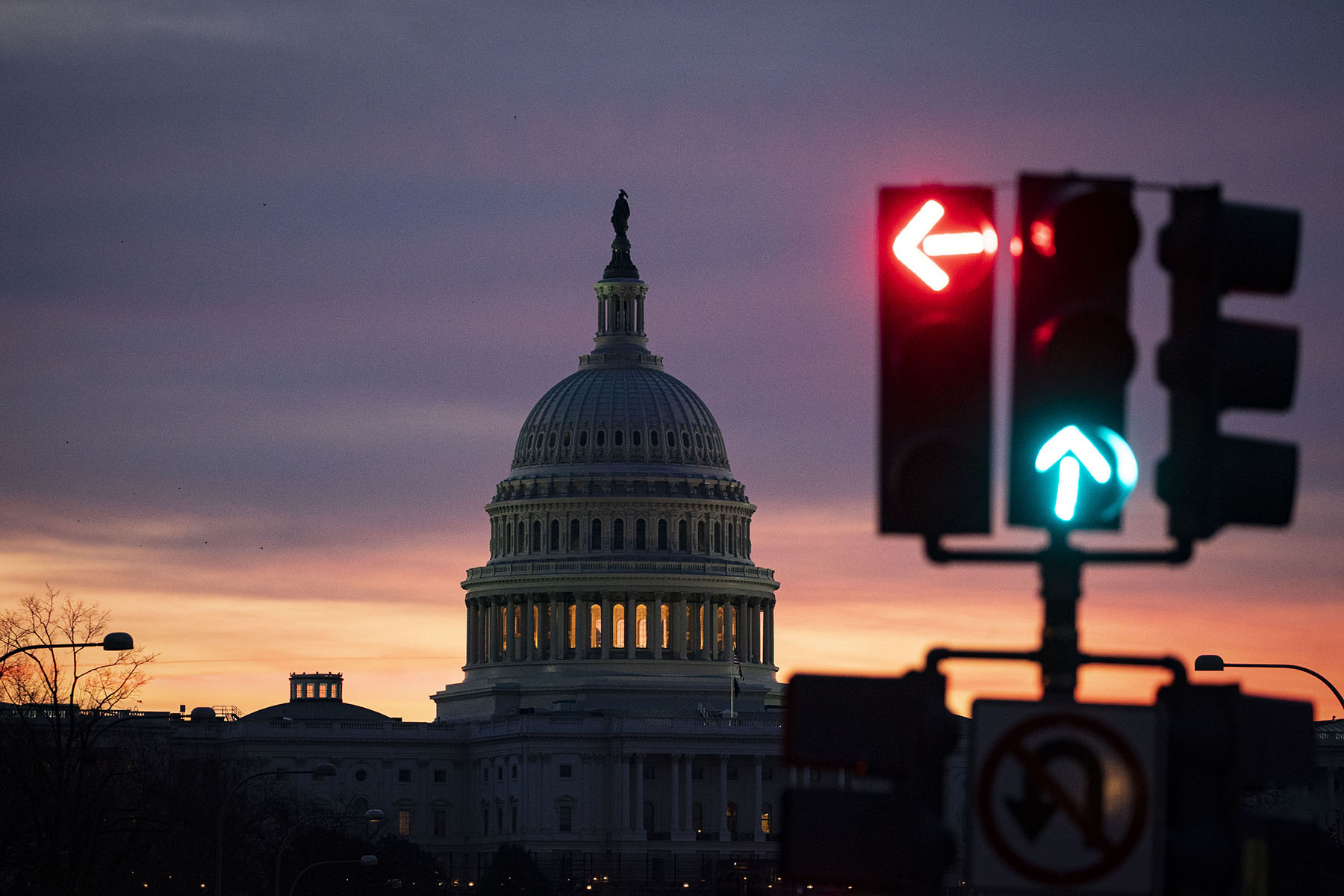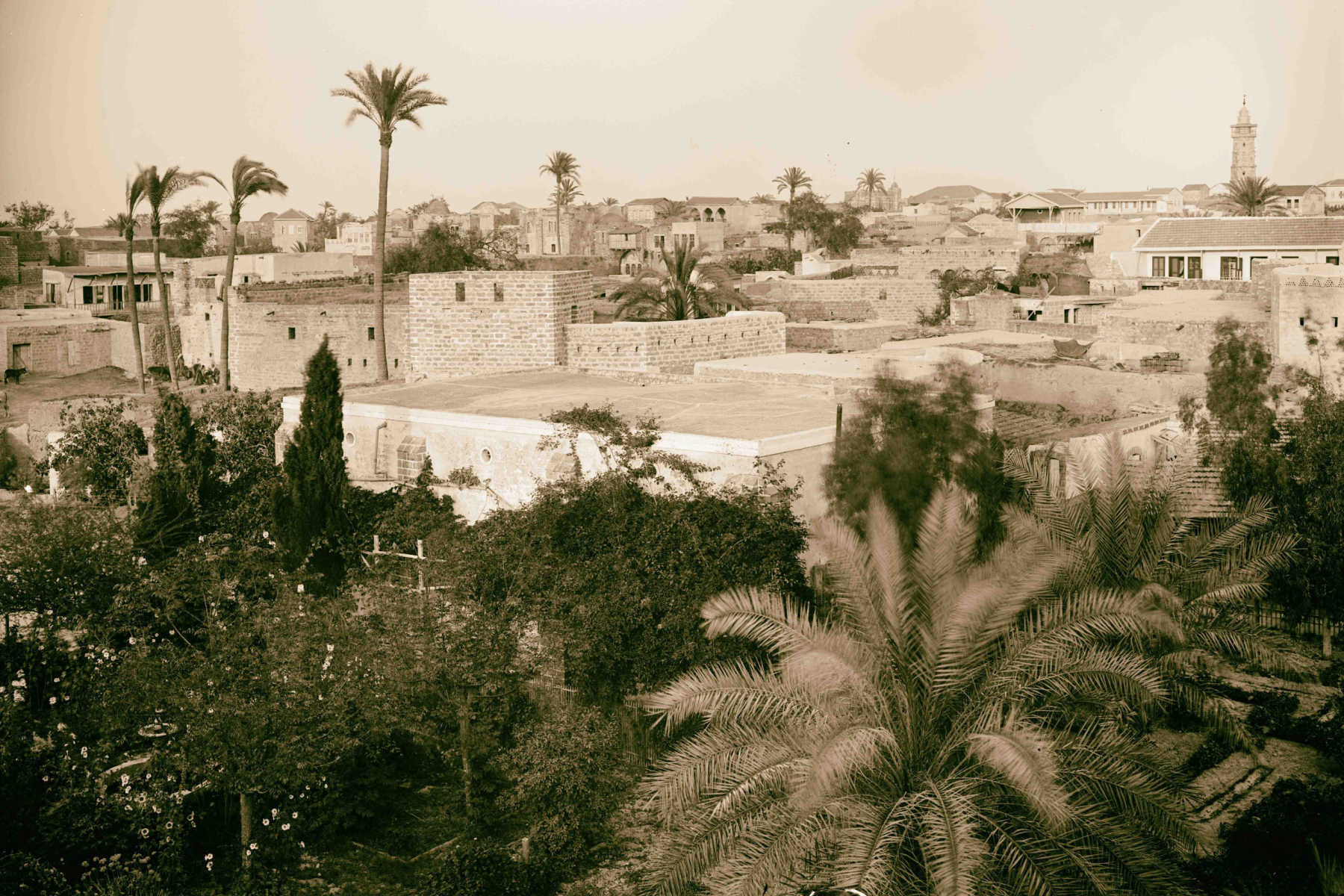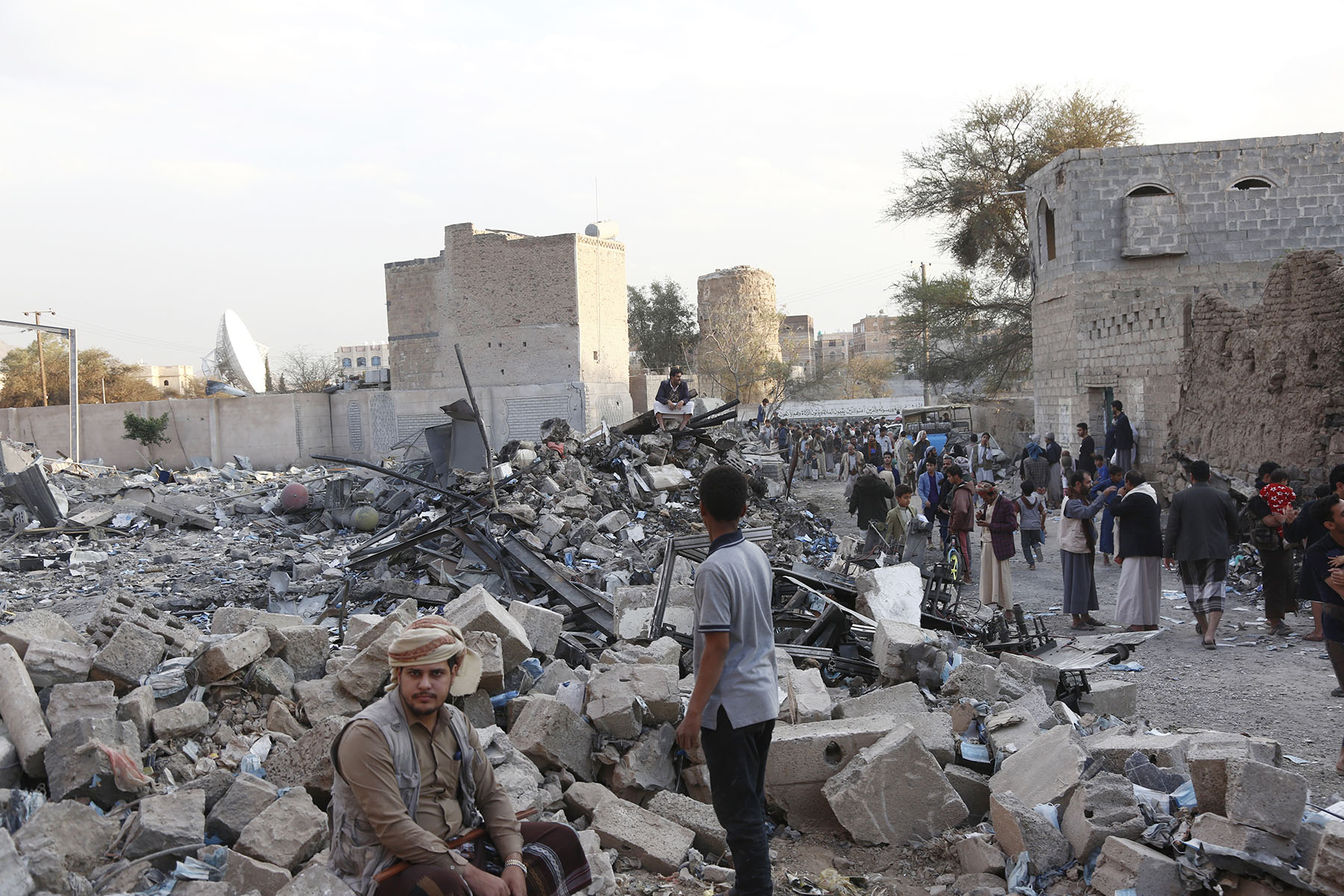Frederick Deknatel is the Executive Editor of Democracy in Exile, the DAWN journal.
عربي
Dr. Ghassan Abu-Sittah first treated patients in Gaza during the First Intifada, back in 1987, when he was a medical student. He returned to Gaza as a surgeon during the Second Intifada—and again in 2008-2009, 2012, 2014, 2018 and, once again, this year, during the 11-day war in May, when at least 248 Palestinians were killed in Gaza, along with 12 Israelis. The overall casualty count was much higher: 1,948 Palestinians in Gaza were reportedly injured by Israel airstrikes and artillery, including 610 children. Abu-Sittah performed practically nonstop emergency reconstructive surgery while in Gaza last month, and many of his patients were wounded children.
Abu-Sittah, who is British Palestinian, was previously a professor and surgeon at the American University of Beirut, where he founded the Conflict Medicine Program at the university's Global Health Institute. He has also worked as a surgeon in war zones in Iraq and southern Lebanon. He now lives and practices surgery in London, when he isn't traveling to the besieged Gaza Strip during what he calls "Israel's cyclical wars against Gaza."
He entered Gaza soon after Israel's bombing campaign had begun late on May 10, after Hamas launched rockets into Israel in response to Israeli provocations in Jerusalem, where Palestinians face expulsions from their homes in the neighborhood of Sheikh Jarrah. Israeli security forces had stormed the al-Aqsa mosque compound several times as tensions and violence escalated in and around Jerusalem's Old City.
In an interview with Democracy in Exile, Abu-Sittah discusses how the latest war intensified the existing "catastrophe of the pandemic" for Palestinians. With its ongoing blockade, Israel controls what goes into Gaza, and has withheld supplies of COVID-19 vaccines and even coronavirus tests. An Israeli airstrike last month also damaged the only laboratory in Gaza that processes coronavirus tests.
The 11-day war, according to Abu-Sittah, was another part of Israel's siege of Gaza. The siege has been imposed with Egypt's help since 2007, when Hamas seized control of the territory. The siege allows Israel to "weaponize everything," he says, "including the pandemic—the PCR tests, the vaccine—and use them as part of the mechanism of titrating life and death in Gaza." Although he is back in London now, he expects to return to Gaza again soon, even if this latest war has ended. "There's a bigger one on the horizon," he says.
The following transcript has been edited lightly for clarity and length.
What was it like in Gaza this time?
During the war, the nights were tough. The bombings were concentrated on the Rimal area, where I would stay and where Shifa Hospital is. You could really, all night, feel the pounding around you. And you could see that very quickly, we were heading towards a 2014-war type of scenario, where the health system would be completely overwhelmed by the sheer number of wounded.
Every war has a signature pattern of injuries, and you already started to see from the kinds of injuries you were getting what the targets were. Unlike 2014, when there were lots of shrapnel and lots of burns from the bomb blasts, this time there were lots of crush injuries from housing collapsing on top of people, or masonry flying off and hitting people. That was the dominant injury. In addition, because people were being targeted in their homes, 40 percent of the wounded were children, because that reflects the population percentage of children, which is very, very high. It was the same in 2014. But very quickly again, it was emerging that children were going to be a major part of the injuries. And with them comes a different kind of burden of reconstructive surgery, both in the short term and in the long term, because these are growing children and they will require further surgeries in the future.
As you started to see what the signature wounds are, you start understanding, What is the aim of this conflict? Which was, this time, to completely overwhelm the urban, built-up areas [of Gaza], to make people feel completely vulnerable in their own home.
Was that very different in how it compared to the previous times you were in Gaza doing surgery?
In 2014, at least in the first half of the war, a lot of the attacks were on the rural, peripheral parts of Gaza, and on open spaces. And so, you had much more in terms of shrapnel with injuries, and much more in terms of burns—whereas, this time, the attacks were more central, and more urban, and more in the city center. The percentage of children injured was similar, but almost exclusively, the children that were killed, they were killed in their homes.
And in terms of the situation physically in the hospitals, how did it compare to previous years in Gaza?
Remember, this happened in the middle of a pandemic, so a lot of the anesthetists had been reassigned to the COVID units, when the war started. So there was a severe shortage of anesthetists during this conflict. Plus, the problem with existing in this chronic crisis, or chronic emergency situation, is that you are unable to replenish the normal degradation of the system. When you have people retire, you don't replace them. When you have people emigrating, you don't replace them, because the system is continuously under assault.
The burns unit at Shifa Hospital, where I spent most of the 2014 war, was out of commission during this war because its anesthetist had retired. And there weren't enough anesthetists at Shifa to allocate an anesthetist just for this operating room, as they were able to do during 2014. Now, that meant that patients with limb injuries had to wait a disproportionately long time for their surgery, because all the pressure was on the central operating room suites—more life saving than limb saving. You had to prioritize life-saving rather than limb-saving surgeries.
Do you know roughly how many patients you treated?
I was doing probably between five and eight cases a day, and I was there for 15, 16 days.
You were there with Doctors Without Borders (MSF). In terms of your ability to get into Gaza, and MSF's own ability to get in, was it the exception?
I kind of slipped in as a Palestinian, as the exception. So I did not go into Gaza as MSF; I went in as a Palestinian, with a Palestinian ID. This time around, the Israelis had prevented all of the humanitarian organizations from sending teams, including ICRC [the International Committee of the Red Cross], which has always—at least in previous conflicts—had access to Gaza. MSF could not send in an extra team from outside; ICRC's team could not come in. NORWAC, the Norwegian aid organization, could not send its team in. All of the aid organizations could not come in until after the war.
Was there any communication from the Israelis about why?
No. They also didn't let foreign journalists in, until quite late on. You see, what you do is you weaponize everything—what the Israelis have always done. And as we've learned during COVID, that includes the vaccine and the PCR testing. You weaponize everything. And you use that as part of the process in which you titrate the siege, by using the different levers of crisis and solution to manage the depth of the catastrophe. How deep do you want to dunk people under water?
You have complete impunity—complete moral impunity, so you have really a no-holds-barred approach towards the Palestinians. Then you literally can weaponize everything—from the number of doctors you allow in, to the hours of electricity you allow in, to the numbers of syringes that you allow in, to calories. How many calories do you want to allocate to Palestinians living in Gaza? And so the war is part of that siege.

Speaking of impunity, the U.S., even under a new administration, as always was supportive of Israel no matter what throughout the 11 days, and beforehand as well. Realistically, or practically speaking, if the Biden administration was actually going to live up to what it says it wants to do to promote human rights, what would that mean in Gaza?
Well, obviously the Biden administration is able to stop the war from ever developing. As Edward Said used to always say, it's the dog that wags the tail, not the tail that wags the dog. And therefore, the siege could be ended through the will of the American administration, and the wars could be stopped through the will of the American administration—both in the short term and in the long term, in subsidizing the war. When you give the Israeli government a billion dollars because it had spent a billion dollars killing people, then you send a message that, you know, this one is on the house. Not only do you support them, but you make even the financial aspect of waging a war completely free.
It's always been known that one of the aims of Israel's cyclical wars against Gaza is to act like a kind of morbid, corporate advertising campaign for the Israeli arms industry. Israeli arms manufacturing chief executives have always spoken about the fact that what makes them more competitive is that their "lab" is only 10 minutes drive from the company headquarters—alluding to Gaza. So not only do the Israelis get their expenses paid by the U.S. administration, they make money by advertising the killing power of their products.
As always again, the justification from the Israeli military, and also from the U.S. administration, is to focus solely on Hamas. When you were in Gaza, what were Palestinians in the hospitals, or anywhere else in Gaza, saying about Hamas?
The issue wasn't about Hamas. The issue was what was happening in Jerusalem, which was different than what had been happening throughout the last 30, 40, 50 years. We were back at the situation where the Israelis felt able, politically, to ethnically cleanse a whole neighborhood. This wasn't making Palestinians demolish their homes as a way of ethnically cleansing Jerusalem. The Israelis were so emboldened by continued American and European support, they had started thinking about speeding up the process by expelling full neighborhoods. In a way, that is akin to what happened in the 1948 war.
And so, there was a unanimous feeling amongst Palestinians that this is a prelude to mass transfer of Palestinians, both within the Green Line—i.e. Palestinians who hold nominal Israeli citizenship—and within the West Bank. If you could clear Sheikh Jarrah today, then maybe in a year's time, you could clear a village. And then, you could clear a town. And then, you know, as Netanyahu always believed, you create facts on the ground, and then the world accepts these facts. You don't ask for permission.
And the other issue is, this is a kind of reductionist approach to Gaza's continuous slaughter. Hamas was founded in '88. Israeli massacres against Palestinians—not just in Gaza, but particularly in Gaza—had existed since 1948. Ariel Sharon had built his career by massacring Palestinians in raids on Khan Younis in '56, and before that on Bureij [refugee] camp.
So this idea that Western media tries to peddle that somehow this is a disagreement with Hamas—when you're old enough to remember that the same discourse existed with the PLO, when the Israelis were bombing Lebanon in the '70s and '80s. That, you know, it's not really against the Palestinians and the Lebanese; it's really a problem with the PLO. And had the PLO not been there, these people would not die. It's the same. But unfortunately, unquestioning Western media will take on this idea that somehow this is a duel between Israel and Hamas—as opposed to, this is a settler-colonialist project that is predicated on eliminating the native, like all other settler-colonial projects.
You first treated wounded Palestinians in the First Intifada, in 1987—34 years ago now. Given all of this, and all that time, what will it finally take for the situation for Palestinians to improve?
Decolonization of the Palestinian question—an end to settler-colonialism, because that's the project. The project is a settler-colonial project that aims to eliminate the native. So you will only address the elimination of the native through decolonization.
Do you think you'll be back in Gaza before long?
Oh yes, in a shorter period that previous. The Israeli military leaders used to call this "mowing the lawn," their cyclical wars against Gaza. But I think this time around, the exigencies of trying to sort out the internal Israeli politics—the catastrophe internally of Netanyahu holding on for dear life, so that he doesn't end up in jail—meant that the war had to be interrupted early. So there's a bigger one on the horizon. But the Israelis tell you they need to come and "mow the lawn" every few years.
You described this elsewhere recently as a "man-made humanitarian catastrophe" and a "humanitarian crisis by design."
One of the aims of the siege is to turn the conversation and the discourse around Gaza from that of the ethnically cleansed Palestinians who became refugees in Gaza—Gaza being a refugee camp, the right to return of Palestinian refugees, the right to self-determination—to a humanitarian conversation about the number of syringes, and the number of gauze. How many doctors went in, and how many hours of electricity do you have, and how many calories, and what the latest statistics on child malnutrition are. So, actually, because modern humanitarian discourse depoliticizes and ahistoricizes situations, it's the ideal—it's a kind of conversion mechanism. You create a humanitarian crisis to depoliticize the discourse around Gaza and Palestine.
It absolves the authorities of actually having to address the root problem—
Absolutely. Because you are addressing the "root problem" instead by increasing the number of hours of electricity, and sending in a couple of more doctors, and allowing more patients out… So we keep the conversation around humanitarian needs, rather than dispossession.
![]()
Photo credit: Dr. Ghassan Abu-Sittah, center, performing emergency reconstructive surgery in Gaza during the 11-day war in May. (Photo by Hosam Salem for DAWN)


